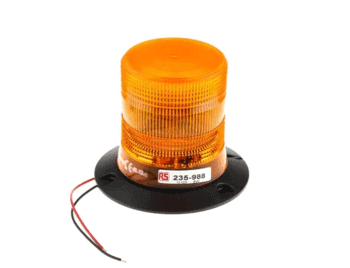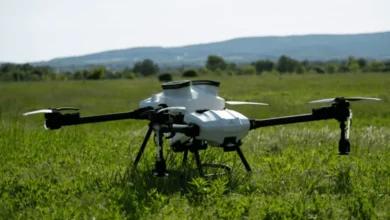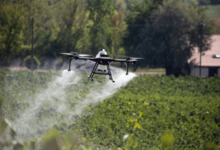Amber Beacons: A Crucial Tool for Effective Traffic Management and Road Safety

The genesis of amber beacons lies in the imperative for enhanced visibility amidst challenging conditions. Originating in maritime domains, where guiding ships through perilous waters was paramount, amber beacons gradually transcended their nautical roots. Today, the amber beacon finds homes in the aerial realms of aviation, bustling construction sites, the urgency of emergency services, and even the vast landscapes of agriculture.
Visibility and Safety Enhancement:
The primary function of amber beacons revolves around the augmentation of visibility, especially in circumstances where visual clarity is compromised. In the realm of construction, these unassuming beacons, strategically mounted on vehicles and equipment, metamorphose into beacons of alertness. Their warm, amber glow serves as a visual caution, cutting through the haze and reducing the likelihood of accidents, thereby fostering an environment of enhanced safety.
Not limited to the terrestrial, amber beacons extend their luminous influence to the skies. In aviation, they metamorphose into anti-collision lights, piercing through the darkness to ensure the visibility of aircraft. This not only aids in preventing mid-air collisions but also underscores their vital role in guaranteeing the safety of both passengers and crew, especially during inclement weather.
Navigating Skies and Fields:
Beyond the concrete landscapes of construction and the fluidity of aviation, amber beacons carve a niche in the vast fields of agriculture. Mounted proudly on tractors and expansive farm equipment, these beacons serve a dual purpose. Acting as silent sentinels, they warn motorists on rural roads of their presence, mitigating potential accidents. Simultaneously, they provide a guiding light for farmers working in low-light conditions or within the vast expanses of fields, creating a symphony of safety amidst the agricultural landscape.
Regulatory Compliance:
In the labyrinthine world of standards and regulations, amber beacons are not exempt. Various industries impose specific guidelines, dictating the flash rate, intensity, and placement of these beacons on vehicles or equipment. Compliance with these standards is not merely a formality; it is a testament to the commitment of industries toward the effective and safe integration of these beacons in their operations.
Environmental Considerations:
As our world seeks to dance to the rhythm of sustainability, manufacturers are undertaking a subtle metamorphosis in the design of amber beacons. Energy-efficient and durable, these beacons now echo the silent whispers of environmental responsibility. The integration of LED technology, for instance, not only enhances visibility but also reverberates with the principles of energy efficiency and longevity.
In the symphony of safety, the amber beacon plays a melodic yet often overlooked tune. From maritime realms to the vastness of agricultural fields, these beacons serve as indispensable companions, enhancing visibility and mitigating risks. Their evolution, marked by technological strides, ensures their continued relevance in the ever-changing landscape of safety and visibility. Whether guiding ships through tumultuous seas or silently alerting motorists to the presence of emergency vehicles, the amber beacon remains a vital component in our modern world, a beacon that silently fosters safety in the unseen corners of our bustling landscapes.
Ready to dive in? Check out these resources to take your knowledge to the next level!








